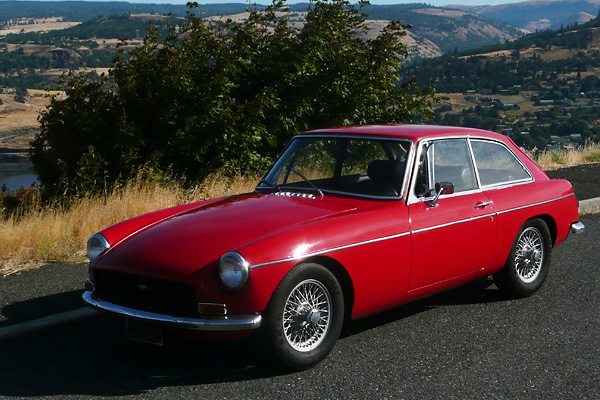
Stacey Allen's 1970 MGB GT with Toyota 4AG Engine
Owner: Stacey AllenCity: Hood River Oregon
Model: 1970 MGB GT
Engine: Toyota 4AG 1.6L
Completed by: owner
| Engine: | Toyota 4AG twin cam 16v 1.6 liter, from a Corolla GT-S.
~10.5:1 static compression ratio.
HKS camshaft (264 duration, 7.9mm lift).
HKS "Hi Rev" valvesprings.
HKS 8 port manifold with Toyota variable induction unit (T-VIS).
Dual Dellorto 40mm DHLA side draft carburetors.
Holley fuel pressure regulator.
Ford EDIS4 ignition with Megajolt computer controller.
Transdapt urethane motor mounts. |
| Cooling: | stock MGB radiator.
Electric fan, with adjustable thermostat.
Toyota oil cooler. |
| Exhaust: | Large tube stainless turbo header for 20 valve 4AG
(as required to clear the MGB steering shaft.) |
| Transmission: | Toyota T50 wide ratio 5 speed.
Fidanza lightweight flywheel.
ACT Street Comp 212mm pressure plate and clutch.
Modified Corolla GT-S driveshaft. |
| Rear Axle: | stock MGB (3.909 gears and open differential.) |
| Front Susp.: | shortened and softened springs to accommodate the (200+ pound) weight loss.
Caster reducing wedges.
Polyurethane bushes.
Uprated anti-sway bar. |
| Rear Susp.: | stock MGB. |
| Brakes: | (Master) later model MGB power brakes. (Front) stock MGB. (Rear) stock MGB. |
| Wheels/Tires: | stock MGB 14" wire wheels. |
| Body: | deleted sidemarkers, badges, and reverse lights. Mark one MGB taillights.
Custom black grille. Deleted center/front hood bulge. Added some GT-S and
"twin cam" badges. |
| Interior: | Stewart Warner "Maximum Performance" tachometer (0-10000rpm). |
| Electrical: | Hitachi alternator. |
| Completed: | September 2009. |
| Comments: | The high final drive ratio keeps this car from reaching it's potential. With that said, it still
streaks to the rev limit (set at 7500rpm) and handles more like an Alfa GTV than most MGB GT's.
"Light" and "balanced" are the best words to describe how it feels.
I chose this engine transplant for its compact size and light weight, not to mention its stellar performance reputation. This engine family is still used for Formula Atlantic racecars. When I started this project, gas was $4 a gallon, so economy was a consideration as well. As small as the engine is, it's still a VERY tight fit but I managed to retain the stock heater system and made no modifications to the engine bay. Since I didn't use Toyota's fuel injection system, I didn't need to alter the stock MGB wiring. I just added some additional leads for a crank-fired ignition system and for the Toyota starter. The Toyota temperature and oil senders works with the Smiths gauges. I can't say the same for the speedo, so I'll add a Stewart Warner speedometer to match the tachometer. I chose to use a low-mounted "turbo" header to help with getting around the steering shaft. It's an off-the-shelf piece that was quite reasonably priced considering it's 304 stainless. I started in earnest in June, and finished by the end of August That includes the engine swap as well as stripping three previous paint jobs to bare metal (exterior), and a quick repaint. Once the car is completely sorted out it will come completely apart for a proper paintjob and restoration of the interior. For now I will enjoy tossing this zippy B thru the twisties in the Colombia Gorge. |
Engine Installation

This photo obviously shows a trial installation, not the final...
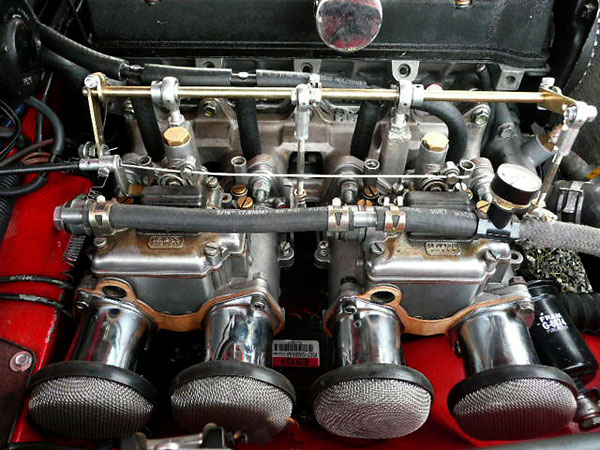
Dual Dellorto 40mm DHLA side draft carburetors.
How It Was Done
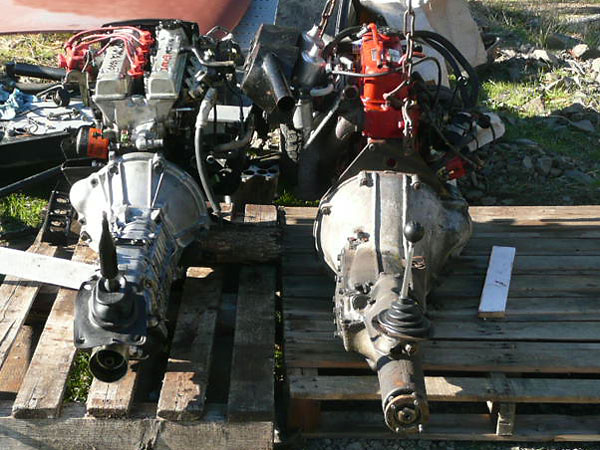
MG B-series and Toyota 4AG compared.
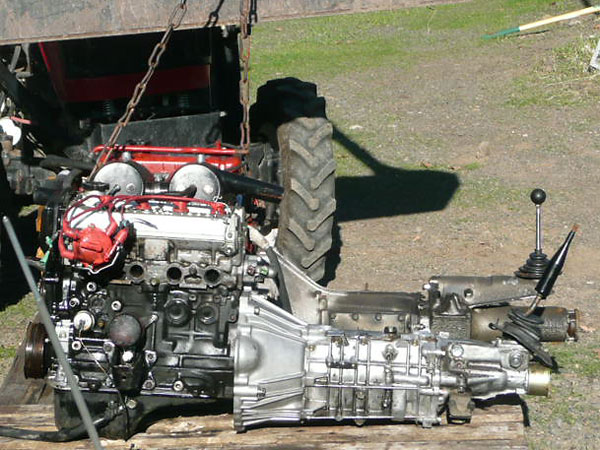
The Toyota engine is tall in front, partly due to a front-sump oil pan.
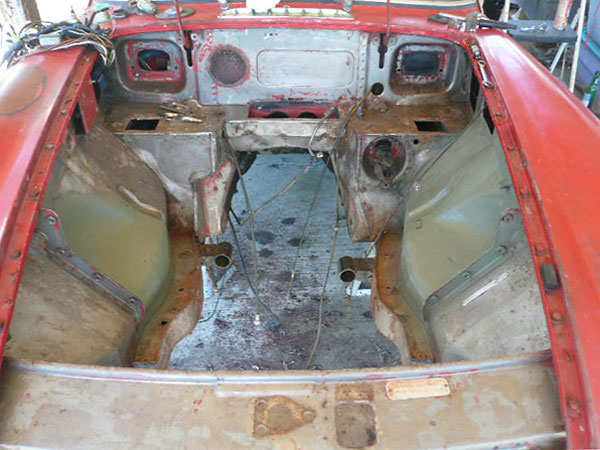
Preparing the MGB engine bay. No cutting of the bodyshell is required, although the job is
neater with the MG motor mounts cut out and replaced by new, custom motor mounts.
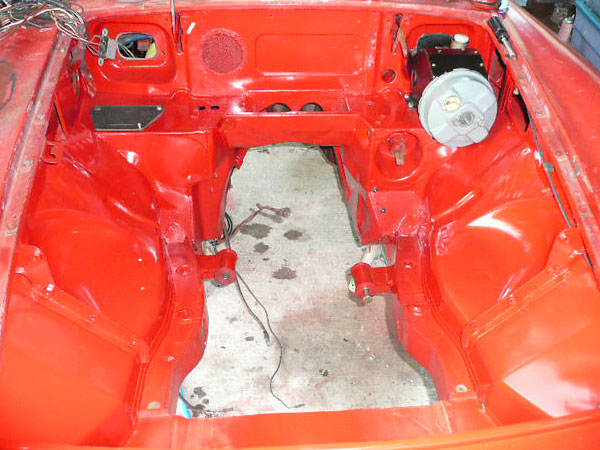
These polyurethane motor mounts are quite stiff.
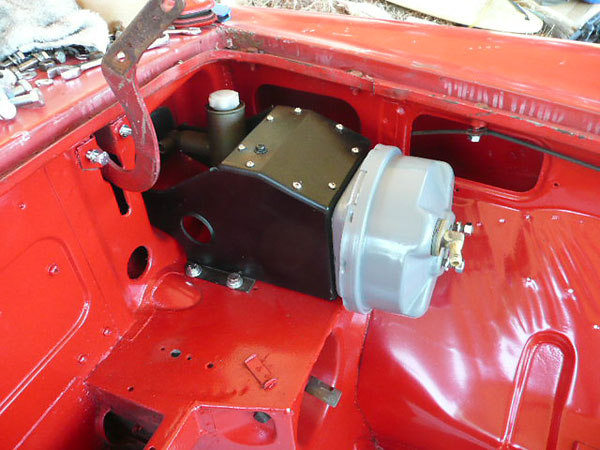
Later model MGB pedal mounting bracket and (optional equipment) power brake system.
|
Enjoying this article? Our magazine is funded through the generous support of readers like you! To contribute to our operating budget, please click here and follow the instructions. (Suggested contribution is twenty bucks per year. Feel free to give more!) |
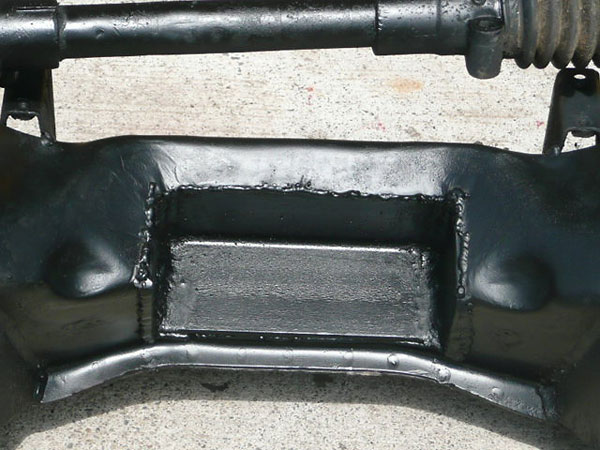
Cut-out in the MGB front crossmember to accommodate the height of the Toyota engine.
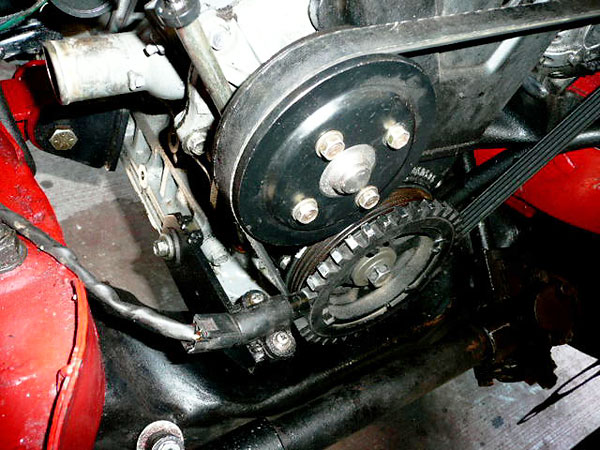
Tone wheel and Hall effect sensor for the crank-fired ignition system.
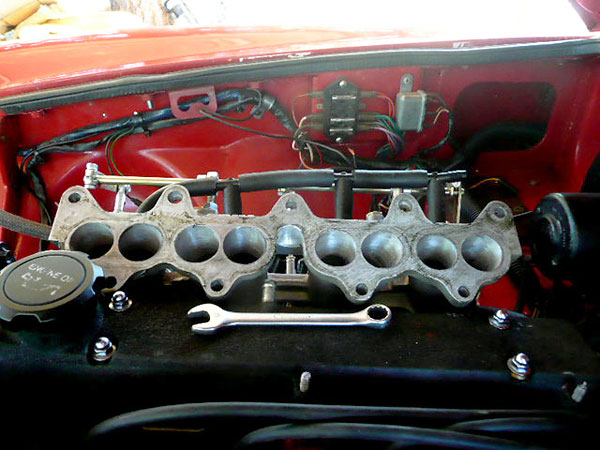
HKS 8 port intake manifold.
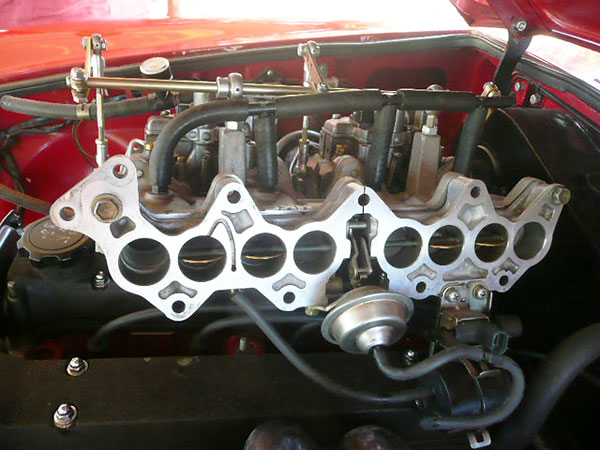
Toyota's Variable Induction System (T-VIS) uses two intake ports per cylinder, with
butterfly valves on the secondary ports that open based on engine speed. The idea is to
achieve better low end torque by managing air velocity into the combustion chambers.
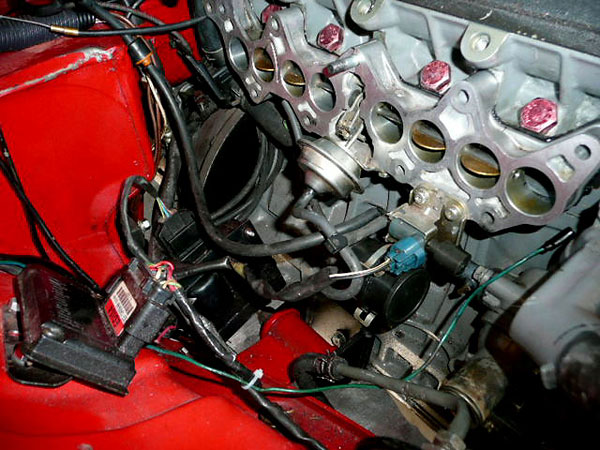
A tremendous variety of aftermarket support exists for the Toyota 4AG engine.
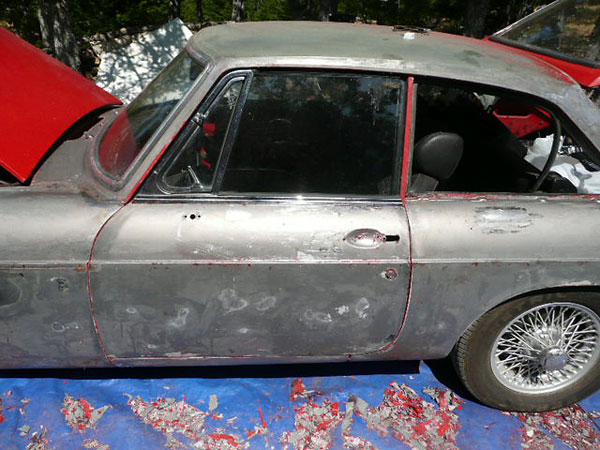
Three generations of old paint needed to be stripped away.
Exterior
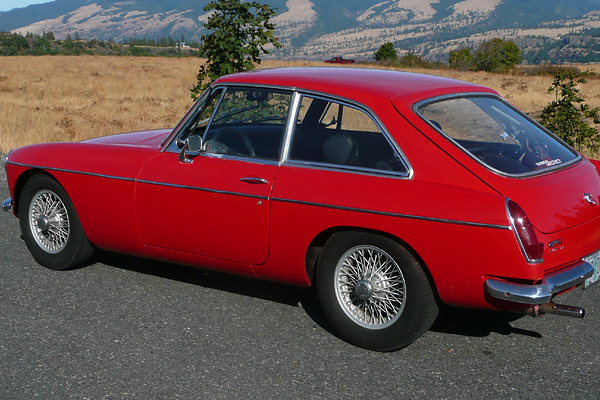
MGB 14" spoke wheels.
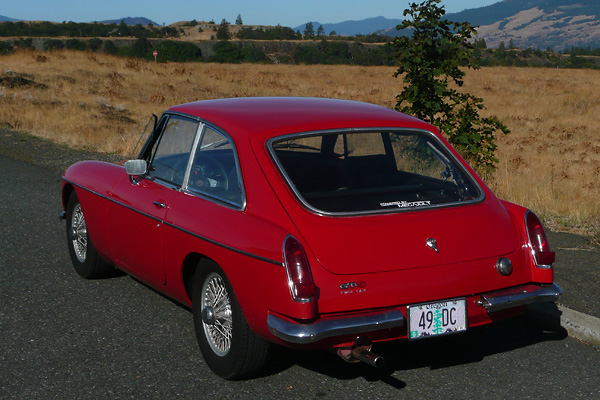
The split rear bumper was provided in 1970 only. Note also the Megajolt decal
and the GT-S badge that hints this isn't an ordinary MGB-GT.

